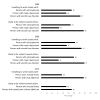Communication Strategies to Counter Stigma and Improve Mental Illness and Substance Use Disorder Policy
- PMID: 28967320
- PMCID: PMC5794622
- DOI: 10.1176/appi.ps.201700076
Communication Strategies to Counter Stigma and Improve Mental Illness and Substance Use Disorder Policy
Abstract
Despite the high burden and poor rates of treatment associated with mental illness and substance use disorders, public support for allocating resources to improving treatment for these disorders is low. A growing body of research suggests that effective policy communication strategies can increase public support for policies benefiting people with these conditions. In October 2015, the Center for Mental Health and Addiction Policy Research at Johns Hopkins University convened an expert forum to identify what is currently known about the effectiveness of such policy communication strategies and produce recommendations for future research. One of the key conclusions of the forum was that communication strategies using personal narratives to engage audiences have the potential to increase public support for policies benefiting persons with mental illness or substance use disorders. Specifically, narratives combining personal stories with depictions of structural barriers to mental illness and substance use disorder treatment can increase the public's willingness to invest in the treatment system. Depictions of mental illness and violence significantly increase public stigma toward people with mental illness and are no more effective in increasing willingness to invest in mental health services than nonstigmatizing messages about structural barriers to treatment. Future research should prioritize development and evaluation of communication strategies to increase public support for evidence-based substance use disorder policies, including harm reduction policies-such as needle exchange programs-and policies expanding treatment.
Keywords: Public attitudes about the mentally ill; Public policy issues; stigma.
Figures

Similar articles
-
Communicating about Mental Illness and Violence: Balancing Stigma and Increased Support for Services.J Health Polit Policy Law. 2018 Apr 1;43(2):185-228. doi: 10.1215/03616878-4303507. J Health Polit Policy Law. 2018. PMID: 29630706 Free PMC article.
-
Portraying mental illness and drug addiction as treatable health conditions: effects of a randomized experiment on stigma and discrimination.Soc Sci Med. 2015 Feb;126:73-85. doi: 10.1016/j.socscimed.2014.12.010. Epub 2014 Dec 5. Soc Sci Med. 2015. PMID: 25528557 Clinical Trial.
-
Right care, first time: a highly personalised and measurement-based care model to manage youth mental health.Med J Aust. 2019 Nov;211 Suppl 9:S3-S46. doi: 10.5694/mja2.50383. Med J Aust. 2019. PMID: 31679171
-
Mental Health Stigma in Department of Defense Policies: Analysis, Recommendations, and Outcomes.Mil Med. 2023 May 16;188(5-6):e1171-e1177. doi: 10.1093/milmed/usab471. Mil Med. 2023. PMID: 34791390 Review.
-
Mental Illness and Substance Use Disorder Stigma: Mapping Pathways Between Structures and Individuals to Accelerate Research and Intervention.Annu Rev Clin Psychol. 2025 May;21(1):85-111. doi: 10.1146/annurev-clinpsy-081423-023228. Epub 2025 Jan 13. Annu Rev Clin Psychol. 2025. PMID: 39805034 Review.
Cited by
-
Population-Based Approaches to Mental Health: History, Strategies, and Evidence.Annu Rev Public Health. 2020 Apr 2;41:201-221. doi: 10.1146/annurev-publhealth-040119-094247. Epub 2020 Jan 6. Annu Rev Public Health. 2020. PMID: 31905323 Free PMC article. Review.
-
Opioid use and stigma: The role of gender, language and precipitating events.Drug Alcohol Depend. 2018 Apr 1;185:339-346. doi: 10.1016/j.drugalcdep.2017.12.037. Epub 2018 Feb 23. Drug Alcohol Depend. 2018. PMID: 29499554 Free PMC article.
-
A Service Evaluation of the Military HeadFIT Initiative: An Implementation Study.Int J Environ Res Public Health. 2021 Jul 9;18(14):7375. doi: 10.3390/ijerph18147375. Int J Environ Res Public Health. 2021. PMID: 34299826 Free PMC article.
-
'Medical Clearance' of Patients With Acute Mental Health Needs in the Emergency Department: A Literature Review and Practice Recommendations.WMJ. 2019 Dec;118(4):156-163. WMJ. 2019. PMID: 31978283 Free PMC article. Review.
-
Dissemination Strategies to Accelerate the Policy Impact of Children's Mental Health Services Research.Psychiatr Serv. 2020 Nov 1;71(11):1170-1178. doi: 10.1176/appi.ps.201900527. Epub 2020 Jun 10. Psychiatr Serv. 2020. PMID: 32517640 Free PMC article.
References
-
- Roehrig C. Mental Disorders Top The List Of The Most Costly Conditions In The United States: $201 Billion. Health Affairs. 2016;35(6):1130–1135. - PubMed
-
- Frank RG, Glied SA. Better but not well: Mental health policy in the United States since 1950. Baltimore: Johns Hopkins University Press; 2006.
Publication types
MeSH terms
Grants and funding
LinkOut - more resources
Full Text Sources
Other Literature Sources
Medical

